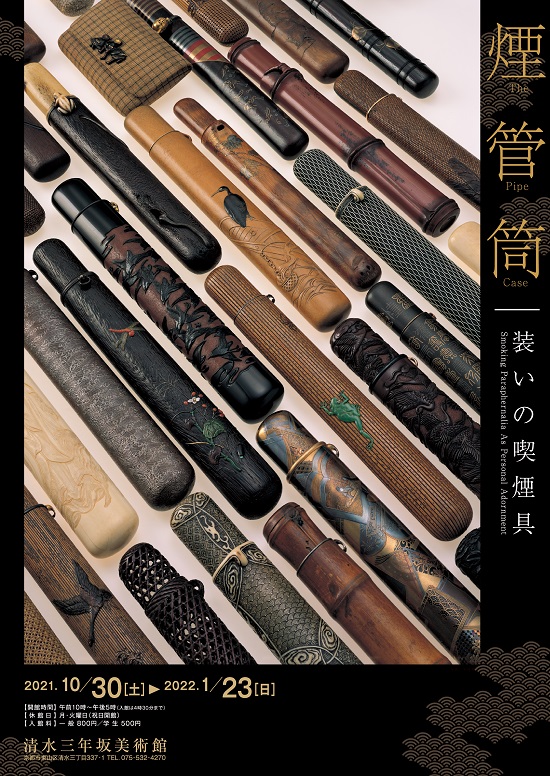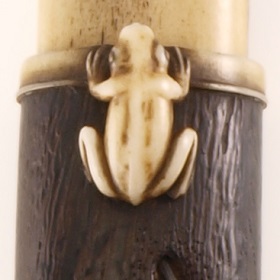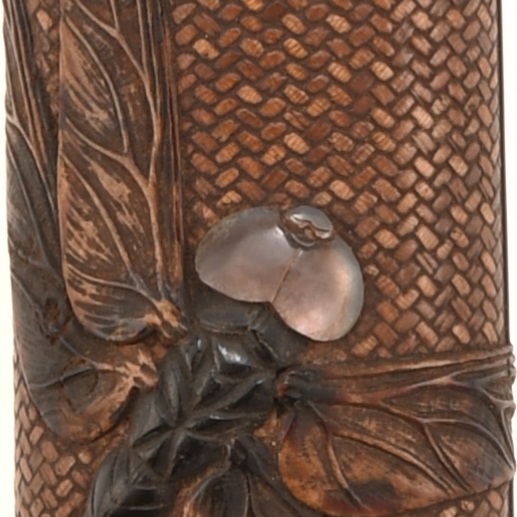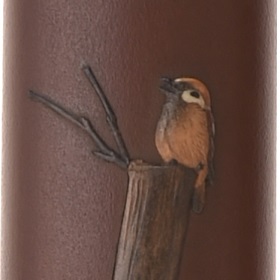
The Pipe Case: Smoking Paraphernalia as Personal Adornment
It is believed that tobacco was first brought to Japan at the end of the 16th century, but in no time, it had spread throughout the entire country. In the present day, rolled tobacco in the form of the cigarette is the mainstream, but at that early time, finely shredded tobacco in a pipe called a kiseru was the way that tobacco was savored, making a kiseru a must for its consumption.
The middle of the 17th century saw the production of shorter kiseru appropriate for carrying about, and portable smoking instruments became quite common. Divided into general forms, there are three kinds of portable smoking paraphernalia: the hitotsusage tobacco pouch, the tsutsuzashi tobacco pouch, and the ryōsage tobacco pouch. The hitotsusage tobacco pouch has a bag into which the finely shredded tobacco was placed and to which a netsuke and drawstring fastener are attached, allowing it to hang from the wearer’s obi sash. The tsutsuzashi tobacco pouch replaces the netsuke with a long, narrow case for storing a pipe, and this pipe case was thrust into the obi sash. The netsuke ryōsage tobacco pouch has both a netsuke and a pipe case.
It is said that smoking paraphernalia as part of the prosperous merchant’s accouterment appeared in the latter half of the 17th century, when Japanese commerce thrived, and such paraphernalia was for the most part made to order. In the 18th century, an extremely high level of technical expertise was reached as great numbers of luxurious items employing various techniques, materials, and garments to satisfy the tastes of those placing the orders were produced.
For the tubular shank of kiseru pipes, a great variety of materials and techniques can be found, from carved wood and ivory, to maki-e and carved lacquer, and even meticulously woven rattan. From the Meiji period, a different sort of demand arose from the members of the newly formed entrepreneurial and civil servant classes of society. In addition to the kiseru shanks produced by the Imperial Household Artists, there were also the articles produced for the international and domestic expositions that were so popular at the time, which earned high evaluations for a uniquely brilliant craftsmanship that brought together every possible sort of technique and beauty. The present exhibition puts on display all at once for your viewing pleasure the many pieces of the museum’s collection of smoking paraphernalia from the latter days of the Bakufu through the Meiji and Taisho periods.
 2025-07-02 / 2021-10-25
2025-07-02 / 2021-10-25 

